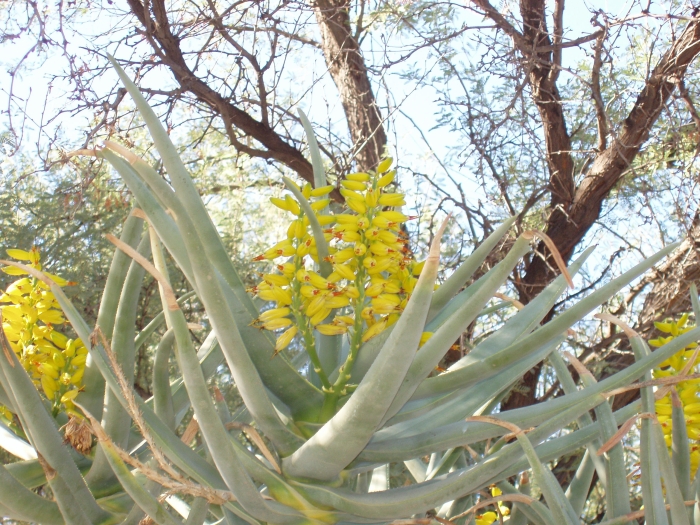Quiver Tree
(Aloe dichotoma)
Quiver Tree (Aloe dichotoma)
/
/

Jim Kingdon (Kingdon)
Public domain
Image By:
Jim Kingdon (Kingdon)
Recorded By:
Copyright:
Public domain
Copyright Notice:
Photo by: Jim Kingdon (Kingdon) | License Type: Public domain | License URL: http://creativecommons.org/publicdomain/zero/1.0/deed.en | Uploader: Kingdon | Publisher: Wikipedia Commons |

































Estimated Native Range
Summary
Aloe dichotoma, commonly known as the Quiver Tree, is an evergreen succulent native to the arid regions of Southern Africa, specifically the Northern Cape region, where it thrives in rocky hills and flat, gravel plains. It can reach heights of 21-30 feet (6-9 meters) with a narrow width of 2-3 feet (0.6-0.9 meters). The Quiver Tree is characterized by its thick, tapering branches and smooth, light bark that helps to reflect sunlight and conserve water. Its name derives from the San people’s practice of hollowing out the tubular branches to make quivers for their arrows. The plant produces bright yellow flowers in the winter, which are held in branched inflorescences and are quite showy, attracting various pollinators.
The Quiver Tree is valued for its striking architectural form and is often used as a focal point in xeriscapes and rock gardens. It is also a popular choice for container planting due to its slow growth rate and unique appearance. In cultivation, it requires extremely well-drained coarse mineral sand with some loam and bone meal to promote growth. It needs full sun, good aeration, and very little water, primarily during the winter months. Overwatering can lead to root rot, while underwatering results in leaf curl and tip die-off. The Quiver Tree is susceptible to aphid infestations and insect infections, particularly when not in full sun and without constant air movement. Indoor plants may require frequent pest treatments to remain healthy.CC BY-SA 4.0
The Quiver Tree is valued for its striking architectural form and is often used as a focal point in xeriscapes and rock gardens. It is also a popular choice for container planting due to its slow growth rate and unique appearance. In cultivation, it requires extremely well-drained coarse mineral sand with some loam and bone meal to promote growth. It needs full sun, good aeration, and very little water, primarily during the winter months. Overwatering can lead to root rot, while underwatering results in leaf curl and tip die-off. The Quiver Tree is susceptible to aphid infestations and insect infections, particularly when not in full sun and without constant air movement. Indoor plants may require frequent pest treatments to remain healthy.CC BY-SA 4.0
Plant Description
- Plant Type: Succulent
- Height: 21-30 feet
- Width: 3-6 feet
- Growth Rate: Slow
- Flower Color: Yellow
- Flowering Season: Winter
- Leaf Retention: Evergreen
Growth Requirements
- Sun: Full Sun
- Water: Very Low
- Drainage: Fast
Common Uses
Bee Garden, Bird Garden, Drought Tolerant, Fire Resistant, Hummingbird Garden, Low Maintenance, Rabbit Resistant, Rock Garden, Showy Flowers
Natural Habitat
Arid regions of Southern Africa, specifically the Northern Cape region
Other Names
Common Names: Kokerboom
Scientific Names: , Aloe dichotoma,
GBIF Accepted Name: Aloe dichotoma L.f., 1782